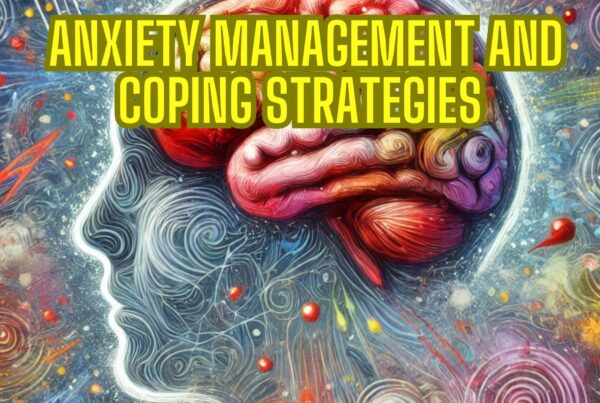Self-Hypnosis for Shy Bladder Management: A Step-by-Step Guide
Shy bladder syndrome, medically known as paruresis, is a condition that inhibits an individual’s ability to urinate in public or when others are nearby. This often misunderstood condition affects a significant portion of the population, leading to social anxiety and limitations in daily life. At its core, shy bladder is not just a physical issue but predominantly a psychological one, where the mind’s perceptions and fears play a crucial role. In this blog, we explore how self-hypnosis for shy bladder management could be a game changer if you’re currently living with this issue.
The Psychological Roots of Shy Bladder
Shy bladder syndrome, or Paruresis, often originates from a tangled web of psychological factors, primarily rooted in anxiety and self-consciousness. For many individuals, the core of this condition lies in the fear of judgment or scrutiny from others. This fear can be so intense that it triggers a physiological response, inhibiting the natural process of urination. It’s a striking demonstration of the mind’s potent control over the body, where psychological barriers, often built over years, manifest in physical symptoms. These barriers are frequently reinforced by past negative experiences, such as embarrassing incidents or uncomfortable encounters in public restrooms, further solidifying the anxiety and apprehension associated with urination.
Understanding the psychological underpinnings of shy bladder is crucial for effective treatment. It’s not merely about the physical act of urination but about addressing the underlying emotional and cognitive processes. These can include deep-seated beliefs about oneself and one’s body, as well as learned responses to specific environments or situations. By recognizing and confronting these psychological elements, individuals can begin to dismantle the mental blocks that contribute to shy bladder syndrome. This understanding paves the way for therapeutic interventions, such as self-hypnosis, which target the mind-body connection to alleviate the symptoms.
What is Self-Hypnosis?
Self-hypnosis is a powerful, self-facilitated technique that enables individuals to enter a state of focused attention and heightened suggestibility. This practice involves guiding oneself into a deeply relaxed and trance-like state, creating a direct pathway to the subconscious mind. In this state, the mind becomes more open and receptive to positive suggestions and affirmations, making it an ideal tool for personal development and overcoming psychological challenges. Unlike traditional hypnosis, which is often facilitated by a therapist, self-hypnosis places the individual in the driver’s seat, empowering them to take control of their own mental processes and outcomes. This aspect of self-empowerment is a critical distinction, as it encourages personal responsibility and self-efficacy in managing one’s own mental and emotional states.
The technique of self-hypnosis shares several similarities with guided hypnotherapy in terms of the processes and outcomes. However, it stands apart in its approach to personal agency and autonomy. Practitioners of self-hypnosis learn to induce their own hypnotic state, allowing them to address personal issues, reinforce positive behaviors, and modify unwanted patterns of thinking and behaving. This skill can be particularly beneficial for conditions like shy bladder syndrome, where personal discretion and privacy are often desired. By mastering self-hypnosis, individuals gain a valuable tool that can be used anytime and anywhere, providing a sense of control and independence in their journey towards wellness and psychological freedom.
The Power of Self-Hypnosis in Addressing Psychological Issues
Self-hypnosis offers a unique avenue for addressing the psychological aspects of shy bladder. By accessing the subconscious mind, it allows individuals to reframe negative thought patterns and build new, positive associations. This method is particularly effective in managing stress, anxiety, and other emotions that contribute to shy bladder.
Self-Hypnosis for Shy Bladder: A Step-by-Step Process
- Find a Quiet Space: Begin by choosing a calm and comfortable environment where you won’t be disturbed.
- Relaxation: Close your eyes and take deep, slow breaths. Focus on relaxing every muscle in your body, starting from your toes to the top of your head.
- Deepening the Trance: Visualize yourself descending a staircase, with each step taking you deeper into relaxation.
- Affirmations: Once fully relaxed, use positive affirmations tailored to overcoming shy bladder, such as “I am calm and in control in all situations.”
- Visualization: Imagine scenarios where you successfully use the restroom in public. Visualize yourself feeling confident and relaxed.
- Emerging from Trance: Gradually bring yourself back to full awareness, feeling refreshed and confident.
Incorporating the Breath Hold Technique with Self-Hypnosis for Shy Bladder
The breath hold technique is an effective method often used to manage the urge to urinate, particularly helpful for those dealing with shy bladder syndrome. When combined with self-hypnosis, it becomes a potent tool in gaining greater control over bladder function. During the initial relaxation phase of self-hypnosis, practice incorporating the breath hold technique. This involves holding your breath for a few seconds, followed by a slow and controlled release. This specific breathing pattern not only enhances the relaxation effect, crucial for effective self-hypnosis, but also directly influences the physiological mechanisms controlling urination. By focusing on the breath, you can calm the mind, reduce anxiety, and create a sense of bodily control.
Integrating this technique within self-hypnosis sessions offers a dual benefit. Firstly, it aids in achieving a deeper state of relaxation, which is essential for effective self-hypnosis. A relaxed body and mind are more receptive to positive suggestions and affirmations, making the self-hypnosis process more impactful. Secondly, the controlled breathing directly engages the nervous system, promoting a sense of bodily autonomy and control. This practice can be particularly empowering for individuals struggling with shy bladder, as it provides a practical and accessible tool to manage their condition. Over time, regular practice of the breath hold technique during self-hypnosis can lead to significant improvements in bladder control and a reduction in anxiety related to urination in public settings.
Practical Tips and Best Practices
Consistency is the cornerstone of mastering self-hypnosis, especially when addressing conditions like shy bladder syndrome. Regular practice not only enhances the effectiveness of self-hypnosis but also steadily builds confidence in managing the condition. It’s important to remember that self-hypnosis is a skill, much like learning a musical instrument or a new language. It develops and refines over time with dedicated practice. Setting aside a regular time each day for self-hypnosis can help in creating a routine, making it easier to integrate this practice into your daily life. Begin with shorter sessions, gradually increasing the duration as you become more comfortable with the technique. This incremental approach helps in developing a deeper understanding of the process and in experiencing the cumulative benefits over time.
Despite the best efforts, there may be times when you find yourself struggling with self-hypnosis, particularly when trying to influence a deeply ingrained habit like shy bladder. This is perfectly normal and part of the learning curve. In such instances, consider seeking guidance from a professional hypnotherapist. A trained therapist can offer personalized advice, refine your technique, and provide additional strategies to enhance the effectiveness of self-hypnosis. They can also help in identifying and addressing any underlying issues that might be impeding your progress. Remember, seeking professional help is not a sign of failure, but a step towards empowerment and achieving your goals more effectively.
Self-Hypnosis for Shy Bladder
Self-hypnosis is a powerful tool in overcoming the challenges of shy bladder syndrome. By harnessing the mind’s ability to influence the body, you can gain control over this condition. Remember, the journey to overcoming shy bladder is a personal one, and self-hypnosis offers a path to empowerment and freedom.
Release Hypnosis Melbourne Hypnotherapy
Since 2015, Lawrence Akers has been working under the name Release Hypnosis offering Hypnotherapy and ACT based work to the people of Melbourne or an online service. Based on St Kilda Rd, Release Hypnosis is an easy and convenient location to get to and accessible by the ANZAC station train and tram stop. Release Hypnosis can help with a wide range of presenting issues, and I offer a free 30 minute no obligation discovery call for those who are unsure if hypnotherapy is the right way forward for them.
Book Your FREE 30 Minute Consultation With Release Hypnosis NOW!
You may also like to read:
Discovering Purpose and Values: A Path to Mental Well-being
Can’t Visualise in Hypnosis? Here’s What You Can Do Instead.
Dealing with Financial Stress and Crisis: Finding Peace Amid Turbulence
What Is The Success Rate of Hypnosis?








